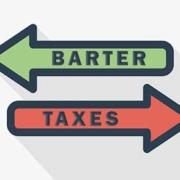The IRS has released final regulations and another round of proposed regs for the first-year 100% bonus depreciation deduction. The Tax Cuts and Jobs Act (TCJA) expanded the deduction to 100% if the qualified property is placed in service through 2022, with the amount dropping each subsequent year by 20%, until it sunsets in 2027. (The phaseout reductions are delayed a year for certain property with longer production periods.) Of course, Congress could act before that to extend or revise the deduction.
To qualify for 100% bonus depreciation, property generally must 1) fall within the definition of “qualified property,” 2) be new (meaning the property’s original use begins with the business) or acquired used property, and 3) be acquired and placed in service by the taxpayer after September 27, 2017.
The final regs address several critical issues related to these requirements and include some changes from the set of proposed regs issued in August 2018. The newly proposed regs provide guidance on some areas not covered in the final regs.
Eligibility of qualified improvement property
Prior to the TCJA, qualified retail improvement property, qualified restaurant property and qualified leasehold improvement property were depreciated over 15 years under the modified accelerated cost recovery system (MACRS).
The TCJA classifies all of these property types as qualified improvement property (QIP). QIP generally is defined as any improvement to the interior of a nonresidential real property that’s placed in service after the building was placed in service. Although Congress intended QIP placed in service after 2017 to have a 15-year MACRS recovery period and, therefore, qualify for bonus depreciation, a drafting error didn’t make that clear.
In what’s been called “the retail glitch,” the 15-year recovery period didn’t make it into the TCJA’s statutory language. The preamble to the final regs explains that legislative action is required to remedy this problem. Until then, QIP placed in service after 2017 is subject to a 39-year depreciation period and remains ineligible for bonus depreciation.
Used property questions
The TCJA makes bonus depreciation available for qualified used property that wasn’t used by the taxpayer or a predecessor at any time prior to its acquisition. The final regs define the term “predecessor” to include:
- The transferor of an asset to a transferee in a transaction subject to rules for tax attribute carryovers in corporate acquisitions,
- The transferor of an asset to a transferee in a transaction in which the transferee’s basis in the asset is determined by reference to the asset’s basis when it was in the hands of the transferor,
- A partnership that’s considered as continuing,
- The deceased person, in the case of an asset acquired by an estate, or
- The transferor of an asset to a trust.
The regs indicate that the IRS believes the consideration of such parties when determining whether a taxpayer has used a piece of property is necessary to prevent the abusive churning of assets by taxpayers.
The August 2018 proposed regs explained that a business has used a piece of property if it or a predecessor had a depreciable interest in the property at any time before acquisition, regardless of whether the taxpayer or predecessor claimed depreciation deductions. However, the regs also requested comments on whether the IRS should provide a safe harbor as to how many taxable years a taxpayer or predecessor must look back to determine if a depreciable interest existed.
The final regs include a safe harbor look-back period that considers only the five calendar years immediately prior to the taxpayer’s current placed-in-service year for the property. If the taxpayer and a predecessor haven’t been around that long, only the number of calendar years they’ve existed is taken into account.
In addition, the final regs provide that “substantially renovated property” can qualify for bonus depreciation even if the taxpayer had a prior depreciable interest in it before the renovation. A property is substantially renovated if the cost of the used parts is less than or equal to 20% of the total cost of renovated property, whether the property is acquired or self-constructed.
Date of acquisition issues
Under the TCJA, eligible property must be acquired after September 27, 2017, or acquired according to a written binding contract entered into by the taxpayer after September 27, 2017. The final regs provide that the acquisition date of property acquired according to a written binding contract is the later of:
- The date on which the contract was entered into,
- The date on which the contract is enforceable under state law,
- The date on which all cancellation periods end, if the contract has one or more cancellation periods, or
- The date on which all conditions subject to such clauses are satisfied, if the contract has one or more contingency clauses.
The August 2018 proposed regs provided that property manufactured, constructed or produced for the taxpayer for use in its business by another person under a written binding contract that was entered into prior to the manufacture, construction or production is acquired according to a written binding contract. Many commenters disagreed with this position, prompting the IRS to reconsider.
Thus, the final regs provide that such property is self-constructed property. This property type isn’t subject to the written binding contract rule and is eligible for bonus depreciation if the taxpayer began manufacturing, constructing or producing it after September 27, 2017.
The ADS factor
Property that must be depreciated under the alternative depreciation system (ADS) generally isn’t eligible for bonus depreciation. As the final regs note, some tax code provisions require the use of the ADS to determine aggregate basis for the purposes of the respective provision — but not for purposes of calculating Section 168 depreciation deductions.
The final regs state that such requirements to use the ADS generally don’t render property ineligible for bonus depreciation. They also clarify that using the ADS to determine the adjusted basis of a taxpayer’s tangible assets for purposes of allocating business interest expense between excepted and nonexcepted businesses generally doesn’t make the property ineligible.
Effective dates
The final regs are effective for qualified property placed in service during tax years that include September 24, 2019. You can elect to apply the regs to qualified property acquired and placed in service after September 27, 2017, or during tax years ending on or after September 28, 2017, as long as all of the rules in the final regs are consistently applied. Alternatively, you can rely on the August 2018 proposed regs for qualified property acquired and placed in service after September 27, 2017, during tax years ending on or after September 28, 2017, and ending on September 24, 2019.
Proposed regulations
The proposed regs contain additional rules regarding the definition of qualified property, consolidated groups, the treatment of components of self-constructed property and the application of the midquarter convention. They also propose exceptions to some of the final regs.
For example, the proposed regs include an exception to the depreciable interest rule for used property when the taxpayer disposes of the property within 90 days of placing it in service. If certain requirements are satisfied, the taxpayer’s depreciable interest in the property during that period isn’t taken into account when determining whether the property was used by the taxpayer or a predecessor at any time before the taxpayer’s reacquisition of it.
Taxpayers generally can rely on the proposed regs for qualified property acquired and placed in service after September 27, 2017, during tax years ending on or after September 28, 2017, and ending before the taxable year that includes September 24, 2019.
Maximize your depreciation deduction
The final and proposed first-year 100% bonus depreciation deduction regs may provide you with some unexpected opportunities to claim bonus depreciation. In some cases, it might be worth amending your 2017 and 2018 tax return filings (or, in the event that you filed an extension, adjust your returns prior to filing). Contact us to maximize depreciation deductions for your business.
© 2019











